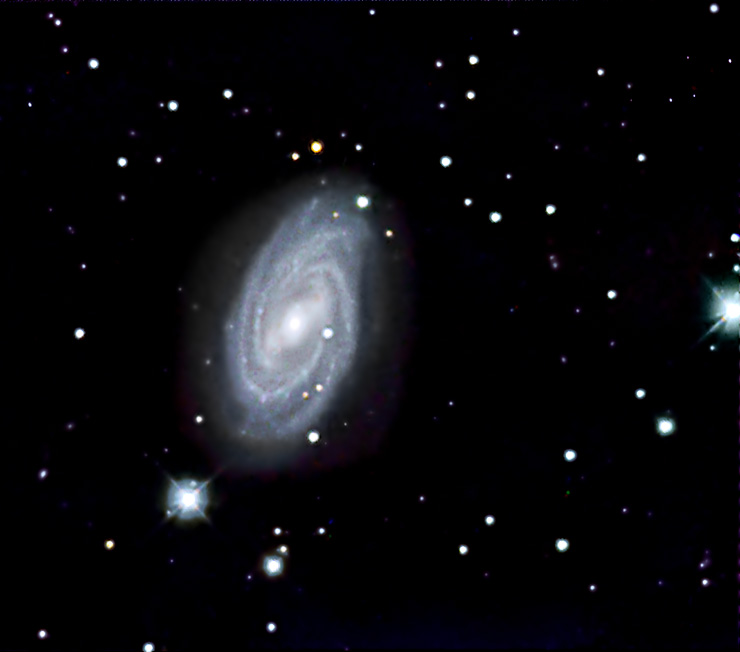

Image Centered on Ra. 11 : 57.6 (hours : minutes) Dec. +53 : 23 (degrees : minutes)
M109 (NGC 3992)
Information (From the SEDS online website)
Discovered by Pierre Méchain in 1781.
M109 is one of the "Theta"-like barred spirals, which appears as a "hazy spot" situated just 40' SE of the mag 2.44 star Gamma Ursae Majoris (Phad, or Phecda).
This object was observed by Pierre Méchain on March 12, 1781, and by Charles Messier on March 24, 1781, together with M108 when he measured M97. Messier listed the object now called "M109" under number "99" in a preliminary manuscript version of his catalog without a position, and Méchain mentioned it in his letter to Bernoulli of May 6, 1783. But together with M108, it was not added to the "official" Messier catalog until 1953, by Owen Gingerich. William Herschel has found this galaxy independently on April 12, 1789, and cataloged it as H IV.61 (incorrectly misclassifying it as a planetary nebula).
Kenneth Glyn Jones has erroneously misclassified M109 in his General Description chapter 1 as type Sb, while in the galaxy description, he correctly gives its class (Hubble type) as SBc.
M109 is about 7-by-4 arc minutes in angular extent, and of apparent visual magnitude 9.5 or 9.6. Visually, only its bright central region together with the bar can be seen, and appear pear-shaped in smaller telescopes, "with a strong suspicion of a granular texture" (Mallas).
According to Brent Tully's Nearby Galaxies Catalog, M109 is about 55 million light years distant, as it is receding at 1142 km/sec, and a member of the Ursa Major Cloud, a giant but loose agglomeration of galaxies. Tully took individual distances from the redshift in a model taking the Virgo-centric flow into account. The distance of this galaxy, however, may be a bit smaller, as the average recession in this cloud is lower, and some part of the surplus may be peculiar velocity.
In a newer article, Brent Tully and his coworkers (1996) establish the existence of this Ursa Major Cluster, as they now call it, by identifying 79 member galaxies (among them M109).
The type I supernova 1956A occurred in this galaxy on March 17, 1956, and reached 12.8 mag (or up to 12.3, according to some sources) in its maximum.
Optics - Exposure information
Telescope, Vixen R200ss 8 inch Newtonian at F4 (Fl 800mm) and aftermarket Moonlite accessories focuser.
Mount, Losmandy G11 with Gemini control electronics
Imager, Starlite-Xpress SXV-h9 using Astronomiks RGB filters
Exposure data, lum = 90 min 2 min subexposures RGB = 15 min each with 2 min subexposures Binned 2x2.
Images acquired with Astroart and aligned then combined in Maxim Dl. Final RGB composite processed with Photoshop Cs
Images acquired from my backyard - " Dirt Clod Observatory" in Antelope California